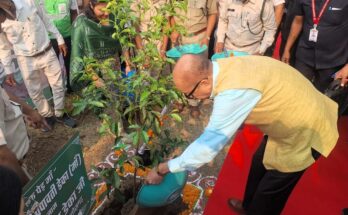Raipur. Farmers of Chhattisgarh can become rich by cultivating medicinal plants along with traditional crops. The farmers of the state are adopting Ashwagandha, Sarpagandha, Satwar, Buch, Aola, Tikhur and aromatic crops such as Lemongrass, Palmaroja, Jamaroja, Patchouli, E-citridora in medicinal crops. Cultivation of medicinal plant Sarpagandha for farmers It has become a source of good income. Sarpagandha crop gets ready in 18 months. By spending only 85-90 thousand rupees, they are earning 5-6 lakh rupees in one and a half years. The fruits, stems, roots of Sarpagandha are all used, that’s why the profit is more. If farmers plant this crop according to the advice of agricultural scientists, they can also get its benefit. About 25-30 quintals of Sarpagandha are produced in one acre. There are many species of Sarpagandha. Rauvolfia serpentina is the main one in this.
Also Read: Many Cooking Oils Cause Diseases! Keep these things in mind while buying oil…
Rauwolfia tetraphyllus is another species, which is grown as a medicinal plant. Sarpagandha’s roots are used as medicine. A medicine called serpentine is extracted from the soft root of this plant. Apart from this, the root also contains alkaloids such as reserpine, sarpagine, roulvenine, tetraphyralin etc. It is a shade loving plant, so it can be grown naturally around mango, litchi and sal trees.
Plow Sarpagandha field in May
Plow the field in May to plant this plant. After the onset of rain, give 200 quintals of rotten cow dung per hectare and mix it in the soil. At the time of planting, give 45 kg Nitrogen, 45 kg Phosphorus and 45 kg Potash. Give this quantity of Nitrogen (45 kg) twice in October and March. Remove weeds by hoeing. Irrigate at an interval of 30 days from the month of January till the onset of rainy season and at an interval of 45 days in winter. Sarpagandha is a crop of one and a half to two years.
Sarpagandha is cultivated at a temperature of 10 to 38 degree centigrade.
According to agricultural science, it can be cultivated in hot and temperate climate. It has better temperature for its cultivation from 10 degree centigrade to 38 degree centigrade. It is cultivated from June to August. It can be successfully cultivated in the area having rainfall up to 1200-1800 mm. Cultivation of Sarpagandha can be done through seeds, stem cuttings and root cuttings.
Sarpagandha is also used in the medicine of lunatics.
There are many stories related to Sarpagandha. According to one such legend, the mongoose gains strength by sucking the leaves of Sarpagandha before the war with the cobra snake. According to the second story, applying freshly crushed leaves of Sarpagandha under the sole of the foot provides relief in snakebite. According to another legend, consuming the roots of Sarpagandha by a mad person can get rid of madness. For this reason, Sarpagandha is also known as Pagal-ki-Dawa in India.




